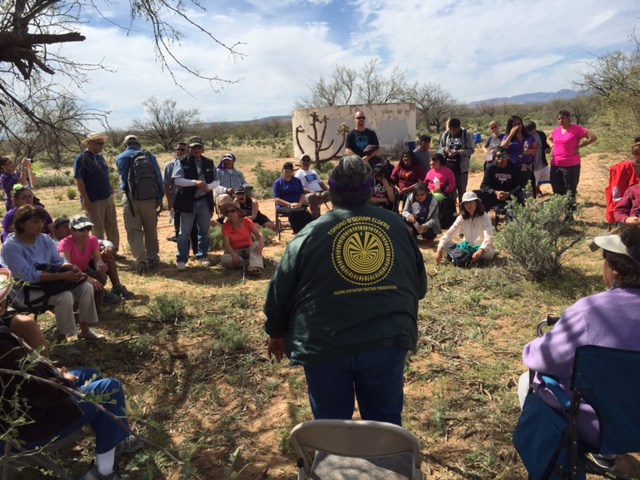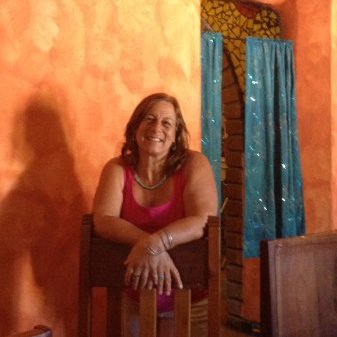
Museums can be a catalyst for communities to come together to design something authentic. When museums acknowledge the expertise of community partners, and partners practice respect for what each brings to the table, the result can be powerful, meaningful programs that honor cultural knowledge and link unique communities together. In embracing equal community partnerships, the intent and content of education programs of museums can be transformed.
Arizona State Museum (ASM) started the Native Eyes Film Showcase in 2004 to expand interpretation of an exhibit about Navajo weaving. Transformed from an exhibit-based ASM program to one produced collaboratively by ASM, Tohono O’odham Nation Cultural Center and Museum (TONCCM), Pascua Yaqui Computer Clubhouse (PYCC), and Indigenous Strategies (IS)1Native Eyes has continued for 13 years because of interest from audiences and partners. Together these organizations use the medium of film to address contemporary issues, make history relevant, inspire Native youth, and create cross-cultural dialogues. Sometimes the programs are at the museum locations, more often they are presented elsewhere.
Mainstream media do not present Native stories from the point of view of Indians. Native Eyes Film Showcase counters this by presenting films by and about indigenous peoples for diverse audiences: intergenerational, multicultural, and tribal. Each member of our collaborative programming committee brings different perspectives, resources, community needs, and audiences to the mix. Community partnerships resulted in expansion of Native Eyes from a film festival to an ongoing regional, multigenerational series of programs, workshops, and events inspired by the films we screen. These have included day-long intensive workshops for youth and elders around the topics of water, leadership, activism, and social justice—and even a community walk for water. Our programs strive for deeper impact than a simple film screening can achieve.
These programs give Native youth opportunities to see Native films, interact with Native leaders, and connect to things of importance in their communities. Meeting Indian filmmakers and viewing their films inspire youth. These experiences provoke a realization that they have a voice in telling their own stories from their perspective. They can challenge Hollywood’s representations of Native peoples and what is documented by non-Native filmmakers. Working with Native leaders at programs related to the films shows youth a path to make a difference in their communities.
Why did the Native Eyes collaborative work with the community to create these rich programs? We were invited. And then we took the backseat. We let the community partners tell us what was important to them. They identified topics and secured speakers who could address these from a Native perspective. They had ideas of activities relevant to where they live and work. We helped focus discussion and brought additional human and financial resources to the table. We took care of logistics that required materials and resources from the outside, while our community partners took responsibility for site-based logistics. The partnership deepened discussions at public screenings because community members and youth joined us. They were able to bring their particular culturally based understanding of issues woven together with universal concerns to the dialogues.
What made this collaborative programming work? Native Eyes did not ask for anything from our community partners. What followed was because of the relationships and respect for each other that were forged. An adult participant attending a youth program said that it made her “even more committed to working with Native youth in my community—to inspire them to understand that they can make a difference, that they are not powerless.”2
Unexpected results included adding oral history interviews to the San Xavier Community Archives and the TONCCM collections, as well as metadata on photographs used at an elders’ program. For the community and museums alike, participants’ information also pointed to possible new programs such as making pottery water jugs and traditional food tasting, cooking, and gardening programs that will add to our knowledge of these practices and link to museum collection objects, photographs, and documents. This broader interpretive approach to film-based programming opens the doors for folklife documentation projects by community members and gives direction to filmmaking workshops. The community might turn to us to partner with them, or perhaps they will want to do them on their own. If called upon, we are eager to work and learn alongside them.
by Lisa Falk and Jennifer Juan
Excerpt shared by Journal of Folklore and Education editors, Paddy Bowman and Lisa Rathje
JFE is a peer-reviewed, open-access publication published annually by Local Learning: The National Network for Folk Arts in Education and found at www.locallearningnetwork.org.
-
- Arizona State Museum’s collections, research, and exhibits focus on the Native peoples of the greater Southwest. The museum sits on the ancestral lands of the Tohono O’odham Nation. The other prominent tribe in the area is the Pascua Yaqui Tribe. PYCC teaches media skills to young community members, and IS works with educational institutions to promote Native-specific education. TONCCM’s purpose is their community—to promote, preserve, and protect the history and the land of the Tohono O’odham and to perpetuate the culture.
- Native Eyes Evaluation Survey for Water Is Life Youth Summit and Walk, 9/2015.








